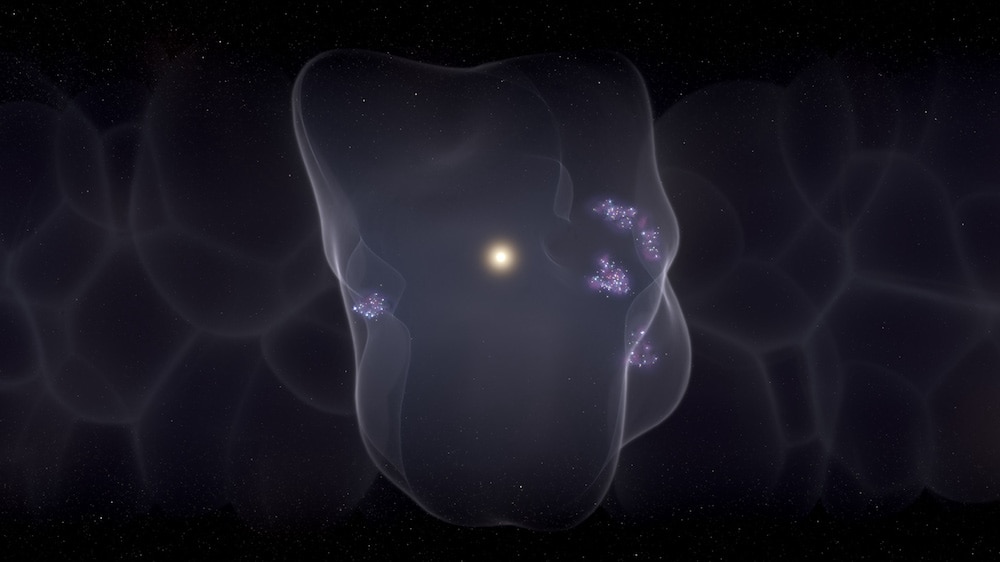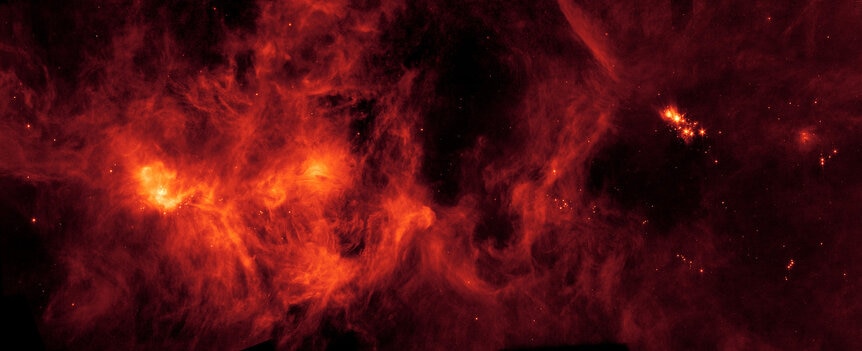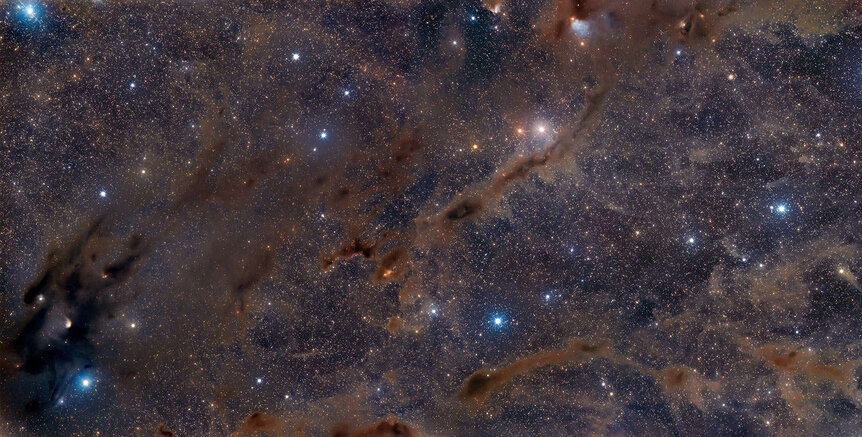Create a free profile to get unlimited access to exclusive videos, sweepstakes, and more!
A thousand-light-year-wide bubble around the Sun was blown by the ghosts of long-dead stars
Local Bubble carved by supernova beginning 14 million years ago.

We've known for decades that our Sun sits near the center of a vast expanding bubble in space, a growing cavity carved out of ambient gas in the Milky Way. But a remarkable new study has come out showing that nearly all the nearby gas clouds that are currently forming stars sit on the thin edge of that bubble — strongly implying that the expansion of the bubble itself triggered that star birth.
What created the bubble? More than a dozen supernovae, massive stars that exploded just a few million years after their birth, 14 or so million years ago. The Sun coincidentally is near the center of the bubble, having happened to enter it 5 million years ago as it orbits the center of the galaxy.
This is extremely cool, and there's a lot going on here.
There is an ethereally thin amount of material between the stars in our galaxy. Made of gas and dust, we call it the interstellar medium, and on average there are only a handful of atoms in it per cubic centimeter.
A while back evidence started coming in that we happen to be in a region of the galaxy with a slightly lower density. This lumpily shaped volume of space is called the Local Bubble, and its exact size and shape has been difficult to pin down. It's long been thought that the cause of the bubble was a supernova or three, with material from the exploding stars blasting outwards and snowplowing up the interstellar medium. What it leaves behind is a lower density region surrounded by a thin shell, like a distorted soap bubble.
A team of astronomers wanted to look more closely at the Local Bubble to see if they could determine its size, shape, and age (link to paper). Moreover, they wanted to see if they could see any effects it might have on the gas clouds surrounding it. Previous studies have been too low-resolution to be able to determine any of this.
They were very clever. Gaia is a European Space Agency mission that has mapped the positions, motions, and distances of well over a billion stars around the Sun. The team used this data to look for nearby young stars, ones less than about 20 million years old and within a few hundred light years of the Sun. These tend to be in clusters containing hundreds or thousands of such stars, spread across space.
They also looked at gas and dust in the nearby volume of space; this can be mapped by looking at extinction, seeing how much the light from individual stars was dimmed by this material. Since we know the distances to so many stars, this can be determined fairly accurately to create a 3D volume map of this material.
What they found is amazing. The Local Bubble is about 1,000 light years across, and nearly every single known star-forming cloud of gas and dust near the Sun lies at the edge of the bubble! Not only that, but the motion of these clusters through space is outward, away from the center of the Local Bubble no matter where they actually happened to be located.
This is far more than coincidence. This strongly supports the idea that the expansion of the bubble itself triggered these nebulae to form stars. It has long been thought that the winds of material expanding away from a supernova can trigger star formation, but we've never had evidence of it this clear before. That's extremely cool.
They've put together a very fun and informative interactive graphic where you can zoom and pan around the structures they found. I suggest playing with it to get a feel for all this — note the distances they use are in parsecs, where one parsec = 3.26 light years.
They find the bubble is expanding at a rate of about 6.7 kilometers per second, or over 24,000 kilometers per hour. The amount of material swept up and forming the shell of the bubble is an astonishing 1.4 million times the Sun's mass. The energy it takes to accelerate that much material to that speed indicates it would've taken something like 15 supernovae in total to drive it. Calculating backwards, they find the bubble got its start about 14 million years ago, so there would've been about 1.1 million years on average between the explosions, though some clumping in time is expected.
That's nightmare fuel. One supernova is terrifying. Fifteen in one volume of space is catastrophic. Enough to blow a hole in interstellar medium 10 quadrillion kilometers across, say.
There's far more they found in the study, too. Near one edge of the Local Bubble are two star-forming clouds, one in Taurus and the other in Perseus. Both, it turns out, are on the edge of a smaller more spherical bubble also created by supernovae. This drove gas outward such that the Taurus cloud is on the near side of that bubble and Perseus on the far side. That's interacting with the Local Bubble, making this the closest example of a bubble-bubble collision.
There's a peculiar structure called the Gould Belt, long known to have a lot of young stars in it as well as gas and dust, shaped like a ring tilted to the plane of the galaxy with the Sun inside it. The new study shows this may be something of an illusion: It's likely actually two different structures seen in projection. One is called the Radcliffe wave, a sinusoidal pattern of somewhat denser gas that's nearly 9,000 light years long on one side of the Local Bubble, and another structure called the Split, which is about half that length. That could resolve a long-standing mystery as to what the Gould Belt is and why it exists.
It gets better. Tracing the motions backwards in time, the team found that the Radcliffe wave and the Split may have been at the same spot in space at the same time, roughly 20 million years ago. This is speculative, but that convergence may have triggered the star formation that in turn created the supernovae that made the Local Bubble in the first place. That's not clear, and needs more work, but it's interesting.
They also found that as the Bubble expanded it slammed into gas clouds creating four separate waves of star formation 10 million, 6 million, and 2 million years ago, and one ongoing now. Again, more evidence for supernova-driven star formation.
This is all very exciting. Astronomers have struggled to put together a picture of local space around the Sun, which is difficult in part because we're inside the Bubble and it's all around us*. But this new study really puts it in a new light. It's like moving into a house and finding a photo album of its history buried in one of the walls. You suddenly see all this structure from a different perspective, and it's incredibly informative about the place where you live.
We are all on this planet orbiting a star 27,000 light years out from the center of the vast Milky Way galaxy, and we're finally starting to really piece together what the neighborhood looks like and how it got that way.






























